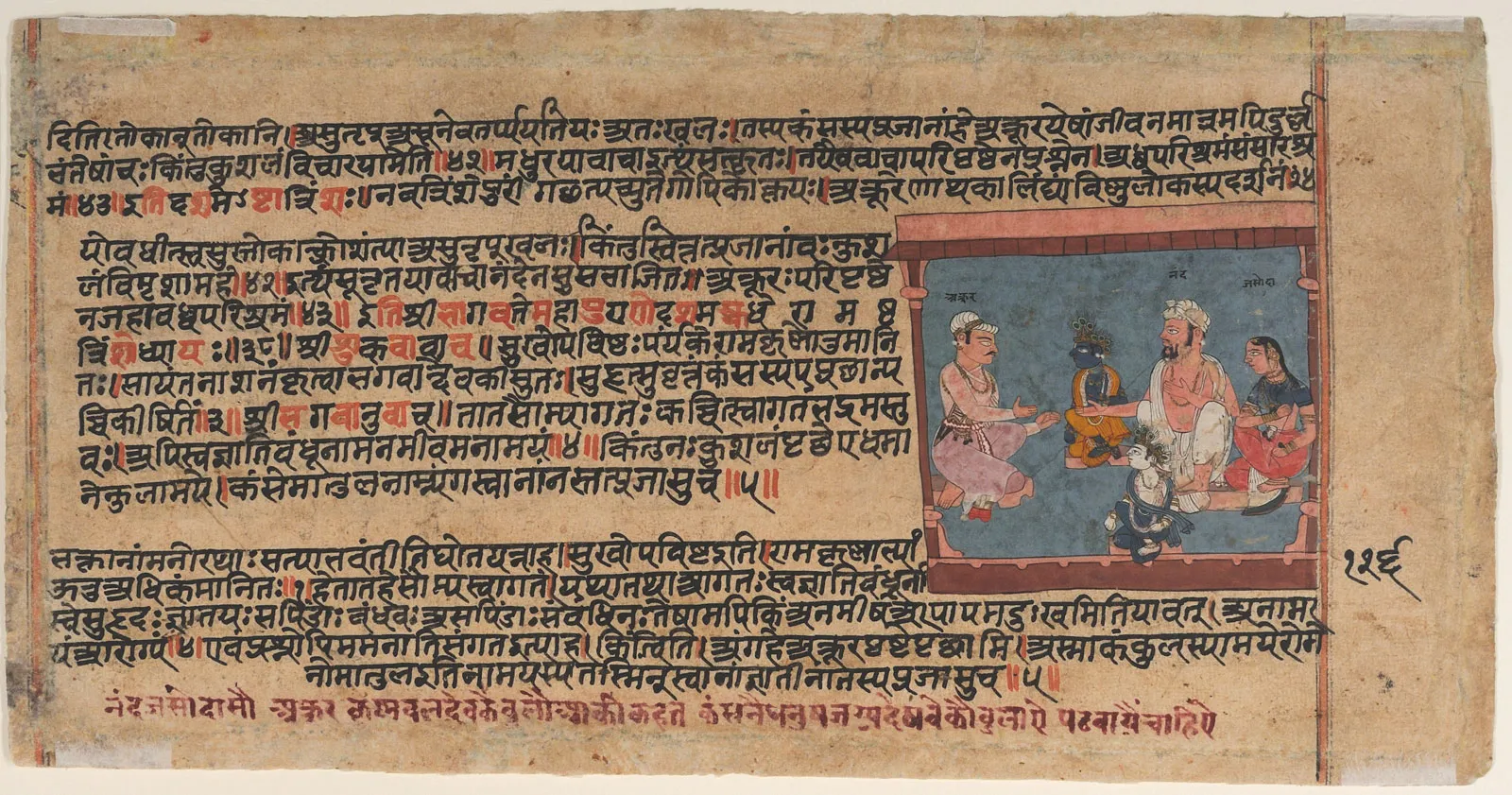Bhagavata Purana with meaning
Bhagavata Purana

The Bhāgavata Purāṇa: History and Context
The Bhāgavata Purāṇa (Śrīmad Bhāgavatam) is one of the most revered of the eighteen Mahāpurāṇas. It holds a special place in Hindu tradition as a foundational scripture of bhakti (devotion), especially to Krishna as the supreme God. Its influence on Hindu philosophy, poetry, music, and culture has been profound, making it one of the most widely read and recited Purāṇas.
Composition and Dating
The Bhāgavata Purāṇa was likely composed between the 9th and 10th centuries CE, although some scholars argue for a slightly earlier or later date. Unlike older Purāṇas, which often emphasize cosmology and genealogies, the Bhāgavata reflects a mature devotional movement centered on Krishna.
Traditionally, it is attributed to the sage Vyāsa, with narration by his son Śuka to King Parīkṣit. Historically, however, it was composed in Sanskrit by anonymous authors, likely in South India, and gradually spread across the subcontinent.
The text contains about 18,000 verses, divided into twelve skandhas (books) and over 300 chapters.
Structure and Content
The Bhāgavata Purāṇa covers a vast range of subjects but is unified by its devotional outlook.
- Cosmology and Philosophy
- Accounts of creation, dissolution, and cosmic cycles.
- The nature of the soul, karma, and liberation (mokṣa).
- Teachings on bhakti as the highest path, surpassing ritualism and asceticism.
- Avatāras of Vishnu
- Narratives of Vishnu’s various incarnations, culminating in Krishna as the supreme avatāra.
- Life of Krishna
- The most famous section is the Tenth Skandha, which narrates Krishna’s birth, childhood exploits in Vṛndāvana, his playful rāsalīlā with the gopīs, and his later deeds as a divine hero.
- These stories highlight the intimate and loving relationship between God and devotee, symbolized by the love of Radha and the gopīs for Krishna.
- Other Narratives
- Stories of Prahlāda, Dhruva, Ajamila, and other devotees illustrate the power of faith and devotion.
- The Nṛsiṁha avatāra story (lion-man) emphasizes divine protection for the righteous.
Religious and Philosophical Significance
The Bhāgavata Purāṇa is a cornerstone of Vaishnava theology. It teaches that bhakti (devotion to God) is the highest spiritual path, accessible to all, regardless of caste, gender, or social status. This message inspired later devotional movements across India.
Its theology strongly influenced Vedānta philosophy, especially in the works of Rāmānuja, Madhva, Vallabha, and Chaitanya Mahāprabhu. In particular, the Gaudiya Vaishnava tradition of Bengal, founded by Chaitanya in the 15th–16th centuries, elevated the Bhāgavata Purāṇa as its central scripture.
Cultural and Historical Influence
The Bhāgavata Purāṇa has been one of the most influential Sanskrit texts in Indian cultural history. Its stories of Krishna inspired:
- Literature and Poetry: regional retellings in Hindi, Bengali, Marathi, Tamil, and other languages (e.g., Tulsidas, Surdas, Jayadeva).
- Music and Dance: classical forms such as Odissi, Manipuri, and Bharatanāṭyam often draw from its Krishna narratives.
- Art and Iconography: miniature paintings and temple sculptures vividly depict scenes from the Tenth Skandha.
Enduring Legacy
The Bhāgavata Purāṇa remains central to Hindu devotional life. Recitations (Bhāgavata Saptāha), where the text is read over seven days, are popular across India. Its vision of a personal, loving God accessible through devotion continues to shape the heart of Hindu spirituality.




















































